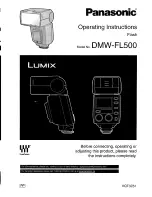
V1.02
Thom Hogan’s Complete Guide to the Nikon D300
Page 685
Special Lighting Issues
UV and Infrared
Most of the visible light spectrum seen by humans is between
400 and 700 nanometers (nm) in wavelength. Very roughly
speaking, blue pixels are generated from information in the
400 to 500nm span, green pixels from the 500 to 600nm area,
and red pixels from data in the 600 to 700nm range. Yet, over
half the light (energy) that reaches our planet’s surface is
outside this limited spectrum. At the low end, you’ll find
ultraviolet light, while at the higher wavelength values lies the
infrared.
The visible and near visible spectrum goes from UV (left) through blue,
green, and eventually red, up to near IR (right).
The D300’s sensor is almost completely insensitive to light
outside the visible spectrum. Each successive Nikon DSLR
seems to be less responsive to UV and near infrared, and the
D300 is the least sensitive to date (actually, the D3 might be
slightly less sensitive). Thus, the D300 isn’t the best candidate
for shooting infrared or UV—the D100 is much more
responsive to the extreme non-visible light ranges than the
D300, for example.
















































